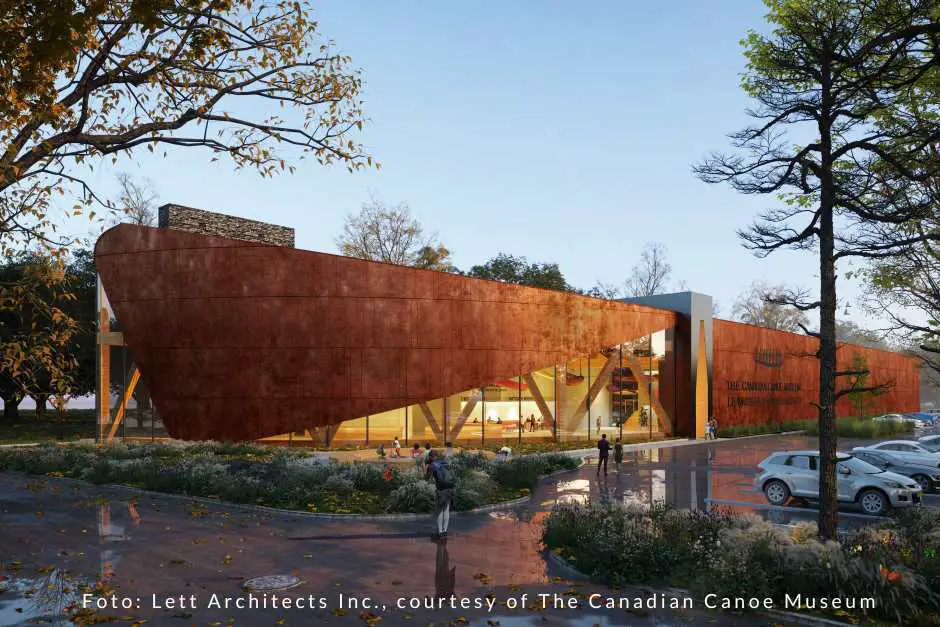Discover the Canadian Canoe Museum
Are you ready for a journey of discovery through Canadian history? Then you should definitely visit the Canadian Canoe Museum in Peterborough! This museum is all about canoes, which play a central role in Canadian history. From the early European explorers to the indigenous peoples who still use these boats today, the canoe has played an important role. The museum offers a unique opportunity to delve into this fascinating world and learn more about the history of canoes.
For example, you'll learn how the canoe revolutionized the fur trade in Canada and how it helped indigenous peoples preserve their culture and traditions. You'll also discover the different types of canoes, from the large, heavily loaded cargo canoes of the fur traders to the sleek, fast canoes used by the locals. Visit the Canadian Canoe Museum and learn about the fascinating history of canoes in Canada!
Canoes in Canada's History
There are few countries in whose history the canoe played such an important role as in Canada, the land of 10000 lakes (if that number is even enough). The first Europeans came here because they were looking for a way through the landmass that blocked their way to the treasures they knew from Asia and were after. They just wanted to cross the North American continent as quickly as possible. Since there were no roads then, they used the countless waterways, large and small, that led into and through the continent. Only on the way did they realize that this country also offered things that interested the people in the countries of origin. First and foremost the valuable skins of the beavers. Thus began the success story of canoes in Canada.
The canoe became the main means of transport for voyageurs. They used it to transport their goods to all regions of the continent in order to exchange them for the furs that the Indians supplied them with. Reason enough for the Canadians to even dedicate their own museum to this traditional means of transport. It is located in the small town of Peterborough east of Toronto.
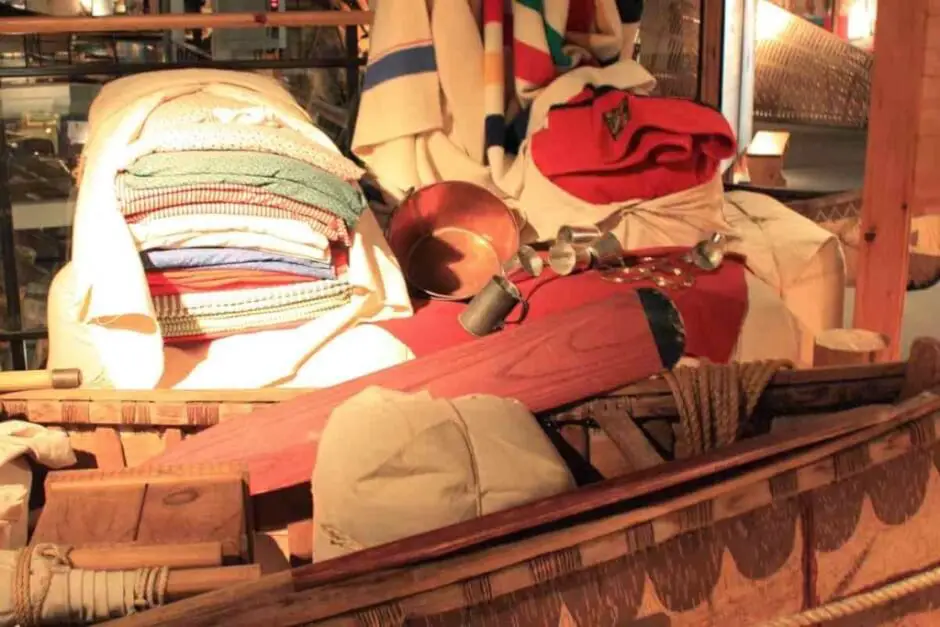
The Importance of the Canoe to the Fur Trade
The first European travelers were French voyageurs in search of a way west. They were soon followed by the English fur traders of the Hudson's Bay Company. They carried the brightly colored blankets west in their large cargo canoes that were so coveted by the Indians. The blankets eventually became a form of currency in the Canadian fur trade.
Examples in the museum show how fully packed the canoes were. Not only the popular blankets represented part of the load. This also included metal cooking pots, supplies of flour, rum and corn. They also included the coveted tiny glass beads that the fur traders' Indian customers used to decorate their clothes, shoes, and tents over time. The Indians loved the bright colors of the glass beads. This went so far that they eventually even used images on tobacco tins or other tinned food as templates for the patterns they embroidered onto their leather clothing and shoes.
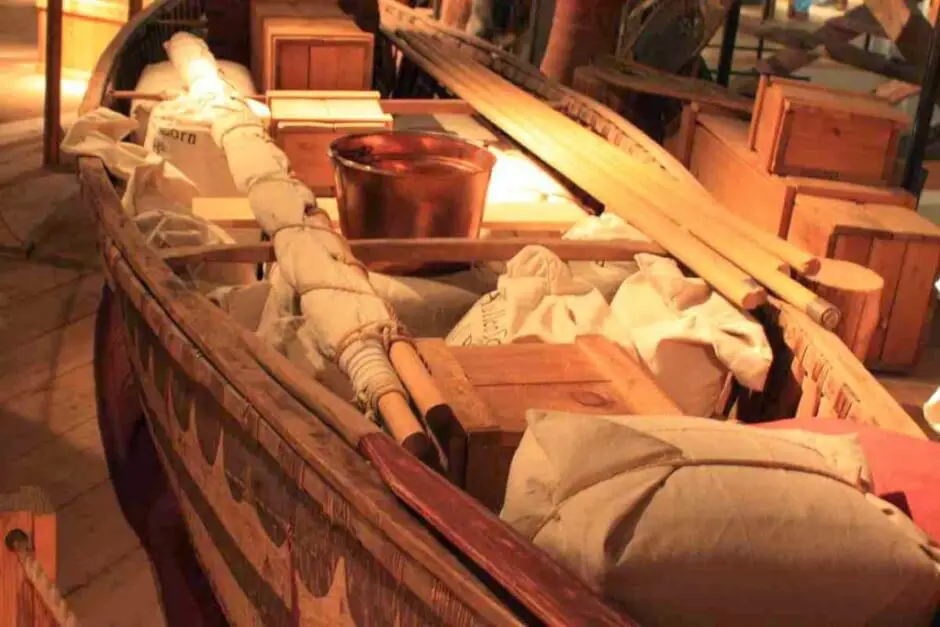
The variety of canoes at the Canadian Canoe Museum
In the Canadian Canoe Museum you not only get to know the canoes of the Europeans, but also those of the Indians. They still use them today, for example on Canada's north-west coast. They still make them from the huge trunks of the red cedar. They hollow out the tree trunks so much that only a thin outer skin remains. They used to go out to sea in these canoes to hunt whales. Today they use it to fish in the coastal waters and major rivers of western Canada. Or they use them as canoes in their ceremonies.
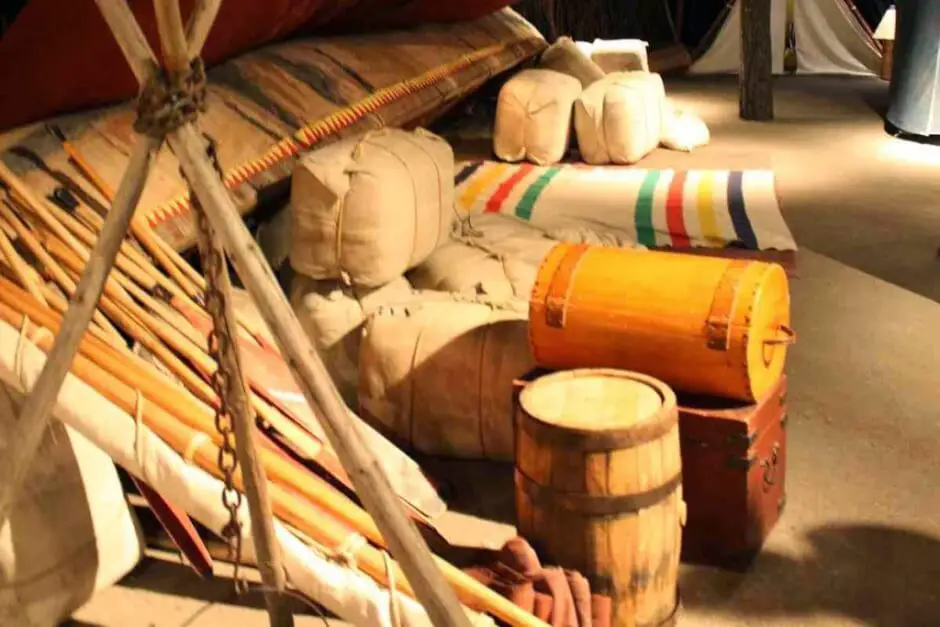
The history of the Peterborough Canoe Company at the Canadian Canoe Museum
Peterborough is home to the Canadian Canoe Museum for a reason. In this place was the Peterborough Canoe Company. Modern wooden canoes were made there until 1961. Even Queen Elizabeth II owned one of the Peterborough Canoe Company's canoes. The company had given her the canoe as a wedding gift. Several canoes belonging to the royal family are on display in the museum and are on loan to the museum. If necessary, the princes collect their canoes from the museum if they want to go on a canoe tour themselves. The Peterborough Canoe Company lost its economic leadership in canoe manufacture as fiberglass and aluminum simplified the mass production of canoes. Even the conversion to the production of wooden speedboats and sailing boats could not stop the sinking of the Peterborough Canoe Company. Therefore, in 1961, it closed its doors forever.
The Canadian Canoe Museum is a reminder of the heyday of wooden canoes. That time when these boats opened up Canada on the waterways. A must-see museum, especially for anyone interested in Canadian history.
And finally ...
The Canadian Canoe Museum in Peterborough is a fascinating place to recommend to any traveler interested in Canadian history and the traditional craft of canoe building. Here you can immerse yourself in the world of canoes and, for example, learn more about how they became an important means of transport and played an important role in the fur trade.
The museum offers a wide range of exhibits, ranging from the large, heavily loaded cargo canoes of the fur traders to the elegant, fast canoes of the indigenous people. There is also a collection of royal family canoes on loan to the museum. Particularly interesting is the opportunity to try different canoes and get a better understanding of how they move on the water.
The Canadian Canoe Museum also offers many educational programs and activities for all ages. Here you can attend workshops and build canoes yourself, or take part in guided tours and learn more about the history of the canoe and its importance to Canada.
Overall, the Canadian Canoe Museum is a unique and memorable experience for anyone visiting Canada. It is a place that brings the country's history and culture to life in a fascinating way and helps to preserve the heritage of canoe building. Visit the Canadian Canoe Museum and discover the beauty and elegance of canoes and the fascinating history behind this important mode of transportation!
Canadian Canoe Museum
2077 Ashburnham Drive,
Peterborough, ON
Note: The Canadian Canoe Museum is currently closed due to the construction of a new museum building. The reopening is planned for the end of summer / beginning of autumn 2023.
Peterborough is not far away from Elmhirst Resort. There you can try your hand at canoeing on Rice Lake.
Canadian Canoe Museum Questions and Answers:
What can I see at the Canadian Canoe Museum?
At the Canadian Canoe Museum you can discover an impressive collection of canoes, including historic boats, modern canoes and canoes used by the royal family.
How long does a visit to the Canadian Canoe Museum take?
A visit to the Canadian Canoe Museum typically takes around two hours, depending on how much time you want to devote to the exhibits and activities.
What is the importance of the canoe in Canadian history?
The canoe has played a central role in Canada's history, from the early explorers who used the waterways to explore the continent to the indigenous peoples who continue to use canoes for fishing, hunting and transportation to this day. You can learn more about it at the Canadian Canoe Museum.
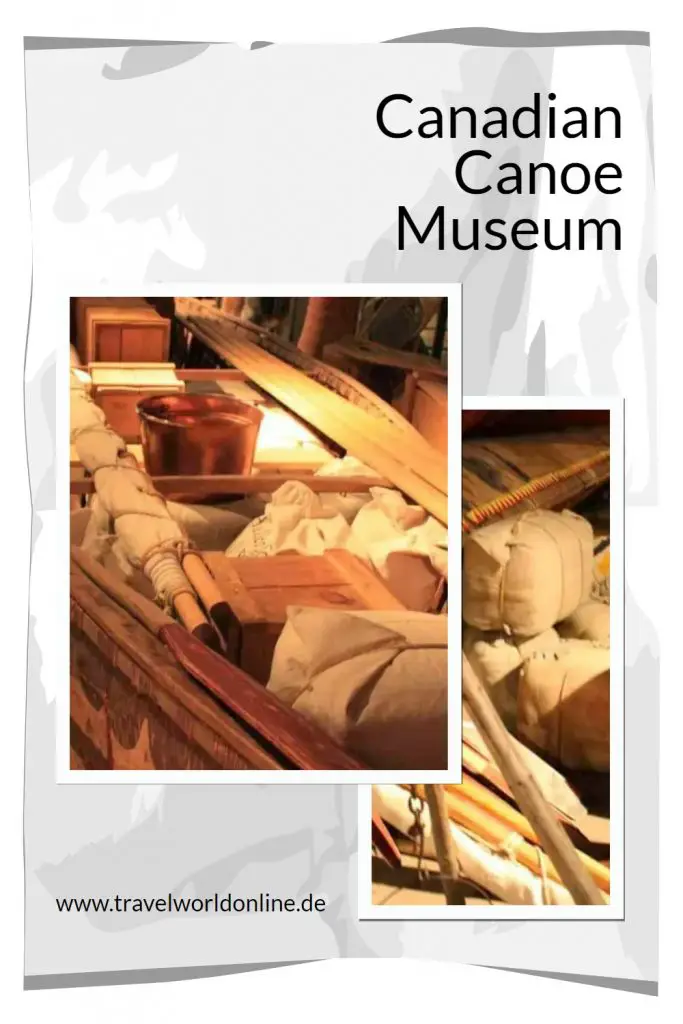
Do you also know:
- Ottawa Winterlude
- Ottawa Winterlude hotels
- Tea Time at Chateau Laurier in Ottawa
- Canada in the fall
- The best photos of Indian Summer in the US and Canada
- Art and culture travel
- Three museums in Vancouver show life on the west coast of Canada
- Art close up in Tofino on Vancouver Island
- The best museums in New York City
- The American flag - symbol and component of American life
- Short breaks in Emmendingen and Freudenstadt
Source Canadian Canoe Museum: On-site research supported by Tourism Ontario. However, our opinion remains our own.
Text Canadian Canoe Museum: © Copyright Monika Fuchs and TravelWorldOnline
Photos: © Copyright Monika Fuchs and TravelWorldOnline
